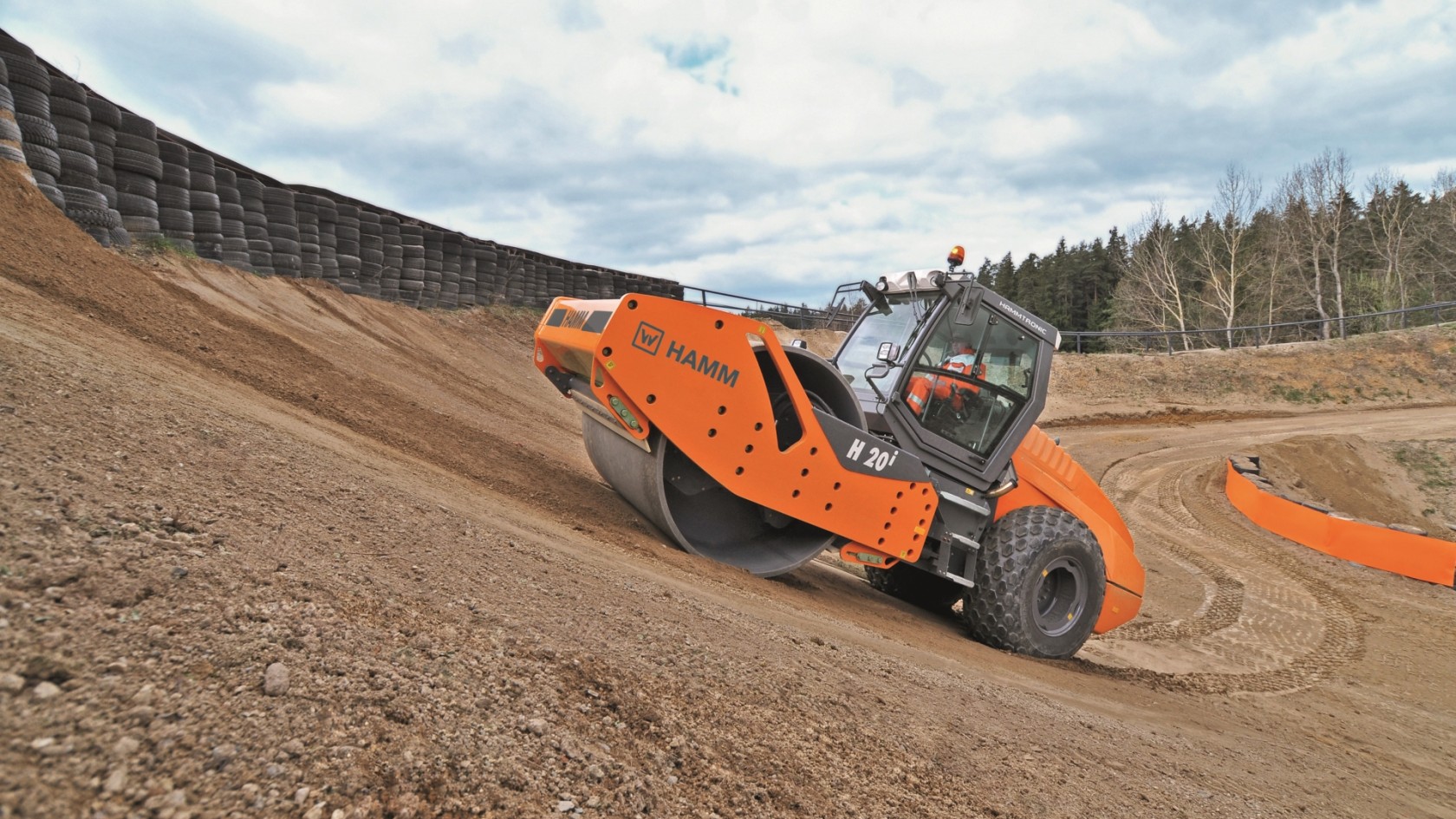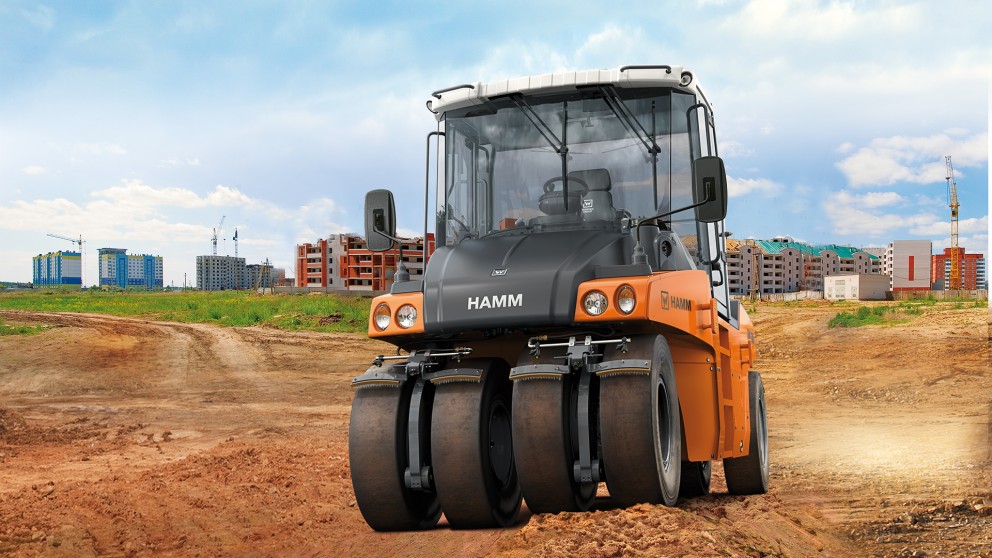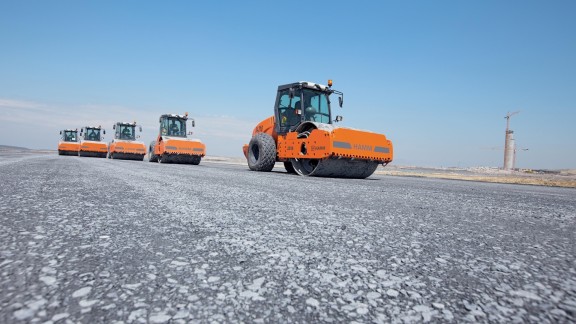

A Battle with Hard Drums
Nature doesn’t always provide the ideal conditions for road construction, with naturally occurring rock formations often in the way. In the majority of cases, the soil is loose and not sufficiently stable. That’s why every new road begins with earthworks. After the route has been defined and marked out, the soil below the route must be prepared.
Compaction is the most important earthworks process. The purpose of compaction is to reduce the pore space of soil filled with air and water. This gives the soil the desired property – by increasing its stability and reducing its tendency to swell due to water absorption, it becomes more resistant to the stresses of traffic and the climate. The latter also makes the soil resistant to frost.
“HAMM offers an extensive range of products for all areas of earthworks and the name is synonymous with sophisticated machine and compaction technology.”
HAMM CompactorsThis process is different for each type of soil. In the industry, a distinction is made between cohesive and non-cohesive soils. In cohesive soils such as loam, clay or silt, the soil particles adhere to each other. In contrast, in non-cohesive soils such as gravel or sand, the particles lie loosely next to each other. With regard to their compactability, soil types can be classified as follows: water-retaining soil, fine-grained cohesive soil, coarse-grained, non-cohesive soil, fine and coarse-grained mixed soil, and rock.
Dynamic compaction with vibrating or oscillating rollers has proven to be particularly effective in earthworks, as it compacts the soil through the combination of vibrations from the roller drum and the weight of the roller.
Three factors have an impact on the intensity of compaction: the displacement of the drum, i.e. the amplitude of the vibration or oscillation, the frequency of the vibration or oscillation, and the application time, i.e. the roller's travel speed. When these parameters are correctly defined, the compaction required can be achieved in considerably fewer passes.

HAMM GRW 280 pneumatic tire roller: HAMM has redefined the pneumatic tired roller with perfect visibility, intuitive operation, and an extremely flexible ballasting system.
Cohesive soils are best compacted using compactors with padfoot drums and high amplitudes, while non-cohesive soils are more effectively compacted with smooth drums and lower amplitudes. As a result, the soil is ready to be paved – unless it still contains too much moisture. In this case, the soil needs to be additionally stabilized.



